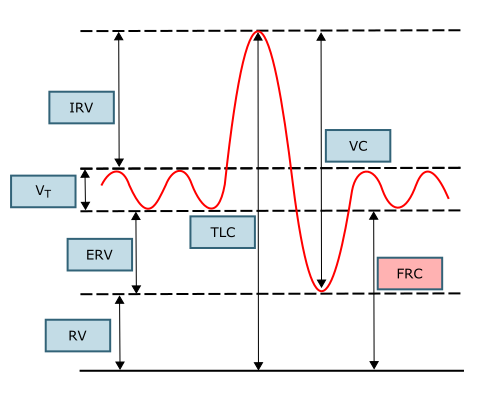Overview
Question 1: Can you define functional residual capacity (FRC)?

Question 1: Can you define functional residual capacity (FRC)?
Answer: Functional residual capacity is the lung volume following a normal expiration.
Question 2: What is the importance of the FRC during apnoea?

Question 1: Can you define functional residual capacity (FRC)?
Answer: Functional residual capacity is the lung volume following a normal expiration.
Question 2: What is the importance of the FRC during apnoea?
Answer: The FRC provides a reservoir of oxygen within the lungs which, for a time, can continue to oxygenate the blood flowing through during apnoea.
Question 3: Can you name factors that may reduce FRC from the normal values?

Question 1: Can you define functional residual capacity (FRC)?
Answer: Functional residual capacity is the lung volume following a normal expiration.
Question 2: What is the importance of the FRC during apnoea?
Answer: The FRC provides a reservoir of oxygen within the lungs which, for a time, can continue to oxygenate the blood flowing through during apnoea.
Question 3: Can you name factors that may reduce FRC from the normal values?
Answer: Factors that may reduce FRC are:
- Moving from erect to supine
- Obesity
- Pregnancy
- Induction of anaesthesia
